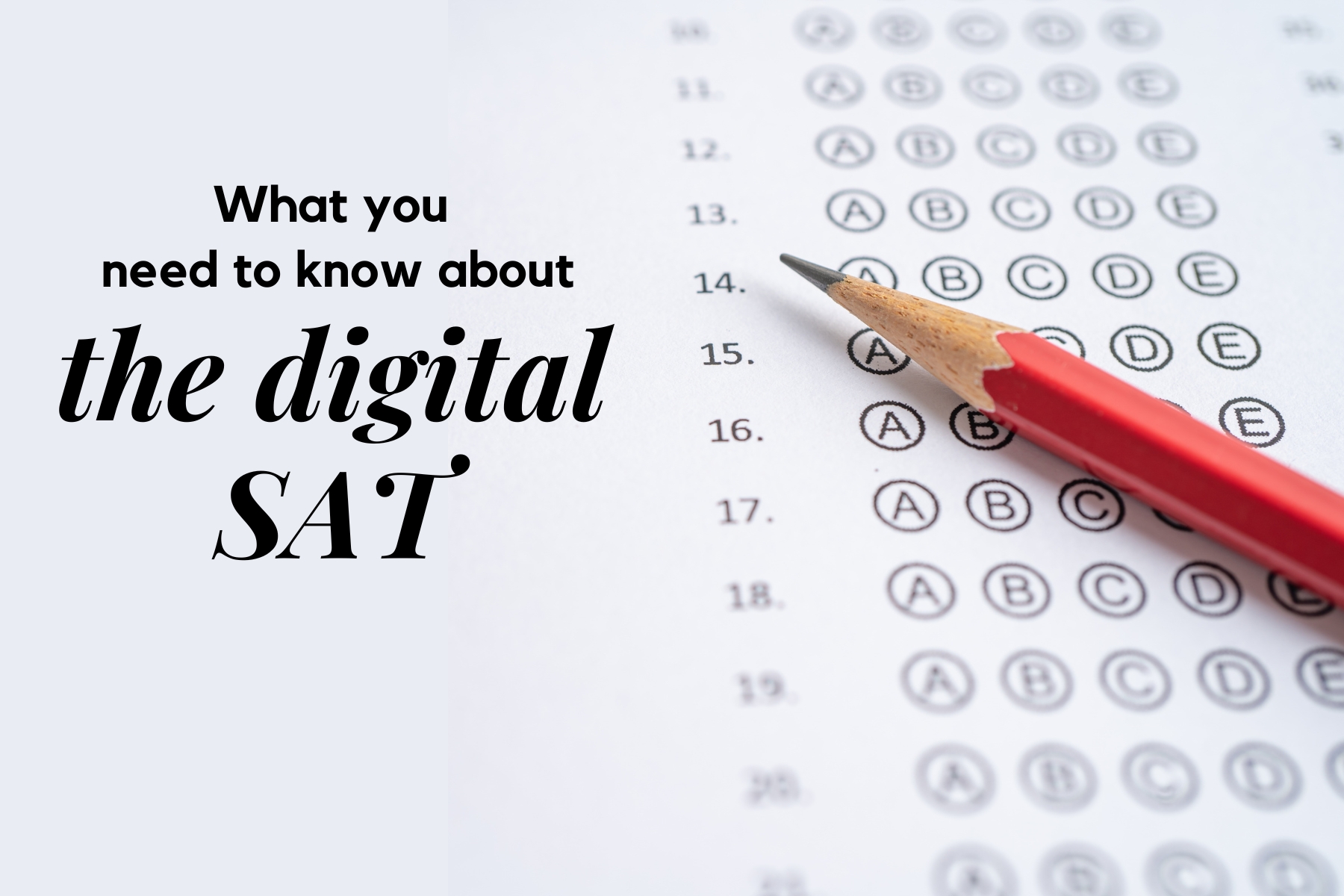Bubble answer sheets and No. 2 pencil reminders will soon become a thing of the past with the launch of the new digital PSAT/NMSQT and SAT. In March 2023, the first digital SAT was administered internationally. The class of 2025 will take the new digital PSAT/NMSQT in 2023, and digital SATs will replace paper-based SATs in the US starting in March 2024. Advantages of the new digital format include greater accessibility and access to test scores in days instead of weeks.
According to the College Board, the digital SAT tests the same content as the paper-based SAT. The scoring scales will remain the same, too, with PSAT scores still ranging from 320 to 1520 and SAT scores ranging from 400 to 1600. However, there are some important differences in the format:
- The digital SAT is significantly shorter (a 2+ hour test instead of a 3+ hour test).
- The digital SAT allows a calculator on all math sections and includes an on-screen Desmos calculator.
- The Reading section and the Writing and Language section are no longer separate; the verbal module combines reading comprehension questions with questions about writing and grammar.
- The digital SAT jettisons long Reading passages and long Writing and Language passages; instead, the verbal section is composed of many short passages testing reading and writing, each with only one single question about them.
- The digital SAT gives students more time per question. Students have 1.19 minutes per question on the verbal section and 1.59 minutes per question on the math section.
- The digital SAT has made word problems on the math section less wordy. In addition, student-produced responses to the math section can now be negative, and they are interspersed through the module instead of clustered at the end.
- The digital SAT is adaptive, meaning that if a student does well on the first module of the verbal (or math) section, their second verbal (or math) module will be harder—but worth more points. Students who do not perform well on the first module will receive an easier second module, but these easier questions will be worth fewer points, capping their overall score at a certain mid-level range even if they answer all questions in the second module correctly.
The digital PSAT/NMSQT, which will be administered for the first time in October 2023, will be the same length and format as the digital SAT. The math content on the PSAT/NMSQT will be slightly different than the math content on the SAT, though, containing more problems in problem-solving and data analysis and fewer problems on topics in advanced math, geometry, and trigonometry.
To prepare for the PSAT/NMSQT and SAT, students should download the Bluebook app from the College Board. Currently, there are four practice digital SATs in Bluebook; later this spring, practice digital PSAT/NMSQTs will be added to Bluebook.
It is important for students to familiarize themselves with Bluebook, since this is the app that students will be using on test day to take the actual digital PSAT/NMSQT and digital SAT. Students can link their PSAT and SAT practice test results to their Khan Academy accounts to get additional practice exercises based on the questions they got wrong.
One big advantage of the College Board’s switch to digital testing is that scores will be made available to students much sooner. Students will be able to get updates on score availability and within days view their PSAT and SAT scores via a new mobile app called BigFuture School.

